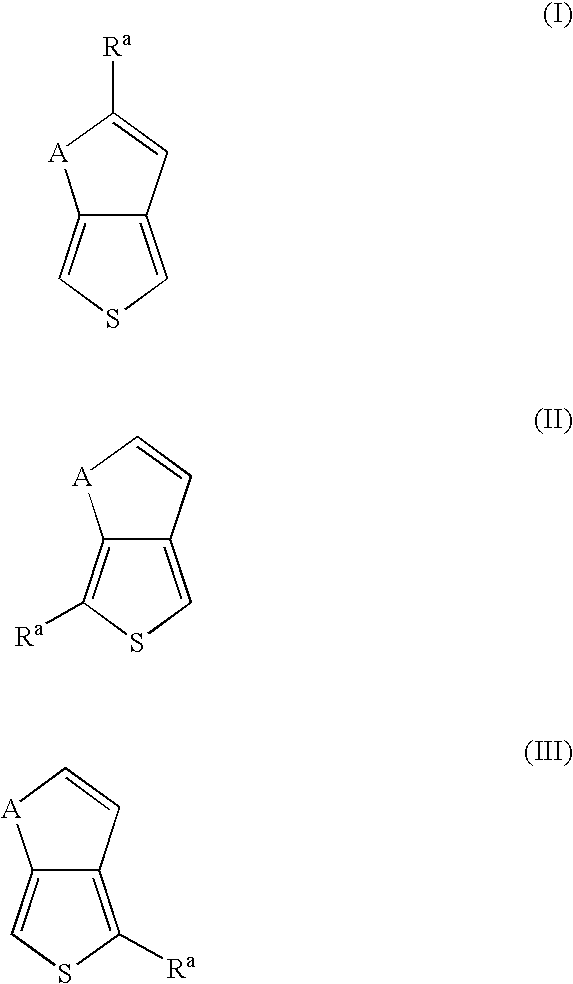Electrochromic devices utilizing very low band gap conjugated counter electrodes: preparation and use
- Summary
- Abstract
- Description
- Claims
- Application Information
AI Technical Summary
Benefits of technology
Problems solved by technology
Method used
Image
Examples
examples
[0078] Poly(thieno[3,4-b]thiophene) and poly(dibenzylProDOT) were electrochemically deposited at a potential of 1.3 V (versus non-aqueous Ag / Ag+, calibrated to be 0.45 V versus NHE) onto one-side of ITO coated glass. The oxidized poly(thieno[3,4-b]thiophene) coated on the ITO-glass was switched to the neutral form in 0.1 M lithium triflate solution by applying −0.8 V (versus non-aqueous Ag / Ag+). The gel-electrolyte composed of 7.0 grams (g) poly(ethyleneglycolethylether methacrylate), 1.0 g lithium trifluoromethanesulfonate, 3.0 g propylene carbonate and 17.5 milligrams (mg) 2,2-dimethoxy-2-acetophenone was sandwiched between the neutral (thieno[3,4-b]thiophene) and the oxidized poly(dibenzylProDOT) and cured for 20 min using a 365 nm UV lamp. 50-100 mm glass beads dispersed in the gel electrolyte composition acted as the spacer to keep the two electrodes apart. The sides of the solid-state device was then sealed using a polyurethane-acrylate to prevent moisture from entering the de...
PUM
 Login to View More
Login to View More Abstract
Description
Claims
Application Information
 Login to View More
Login to View More - R&D
- Intellectual Property
- Life Sciences
- Materials
- Tech Scout
- Unparalleled Data Quality
- Higher Quality Content
- 60% Fewer Hallucinations
Browse by: Latest US Patents, China's latest patents, Technical Efficacy Thesaurus, Application Domain, Technology Topic, Popular Technical Reports.
© 2025 PatSnap. All rights reserved.Legal|Privacy policy|Modern Slavery Act Transparency Statement|Sitemap|About US| Contact US: help@patsnap.com



